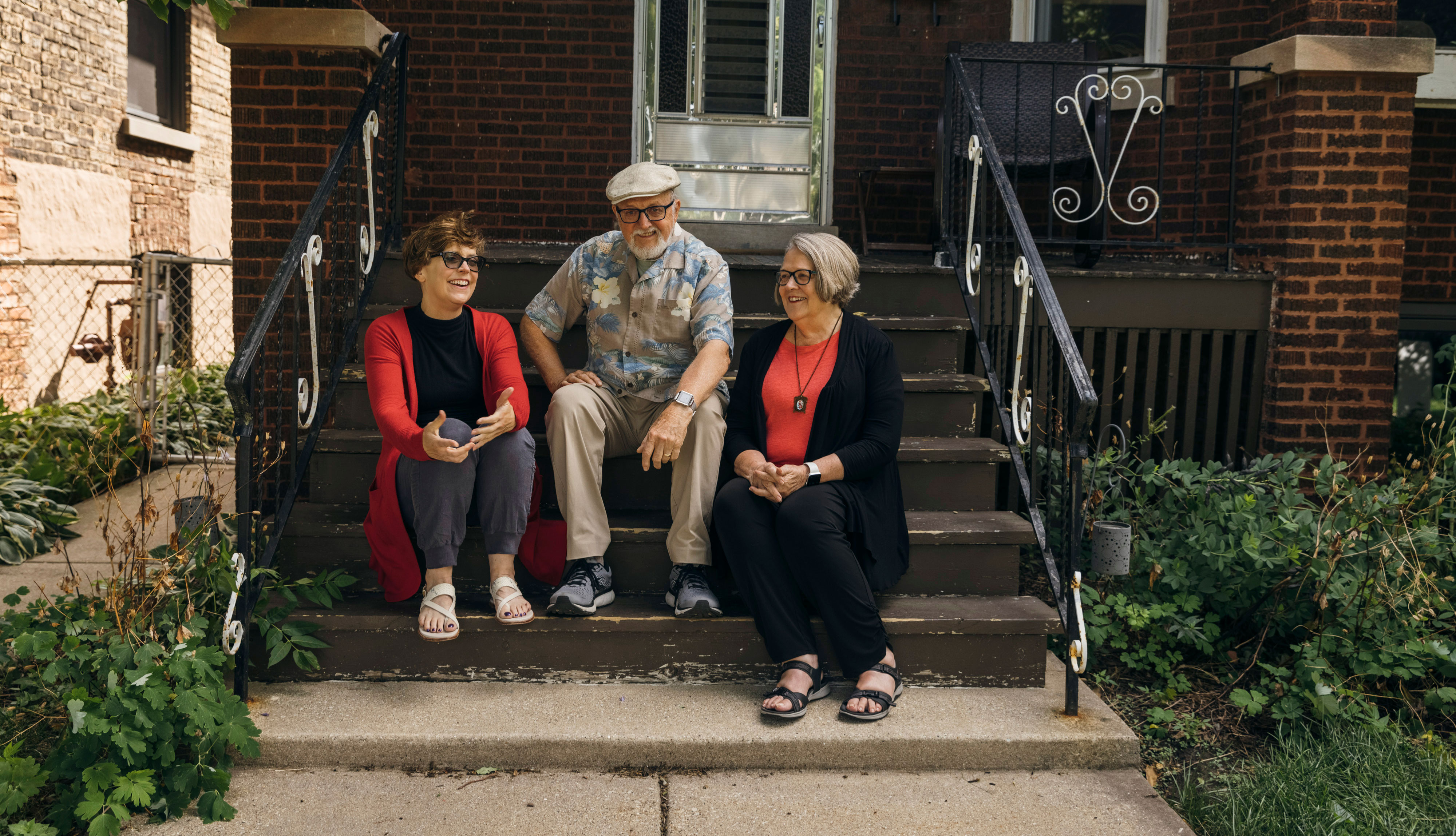AARP Hearing Center

Four years ago, Carmin Ballou’s parents moved from Nebraska to live with Ballou, her husband and their two children in their three-story house in Chicago’s North Center neighborhood.
Now, her parents, ages 80 and 73, are about to get their own home. Ballou plans to raze her two-car garage and replace it with another one, topped with an apartment accessible via an interior staircase. Her parents considered buying or renting elsewhere in the city, but the apartment on their daughter’s property is a more affordable option.
“My parents’ buying power isn’t great,” says Ballou, 48, who works at an insurance firm. “The ADU becomes a way for them to remain close and independent.”
ADUs, or additional dwelling units (also known as accessory dwelling units), are secondary structures built on existing lots, such as backyard houses or apartments located atop garages.
They had been illegal in Chicago since 1957, but that changed last December, when the City Council passed an ordinance allowing property owners in five zones to build ADUs without applying for a zoning variance.
The council passed the ordinance to address a shortage of 120,000 affordable housing units and stagnant population growth.
But there’s a third benefit: helping to alleviate social isolation by allowing older Chicagoans to live affordably near their families.
About one-quarter of Americans age 65 and older are considered socially isolated, according to a 2020 National Academies of Sciences, Engineering, and Medicine report, which was sponsored by AARP Foundation.
Isolation puts older adults at a 50 percent higher risk for developing dementia, a 68 percent greater risk of being hospitalized and a 57 percent higher risk of ending up in the emergency department, the study shows.
“Just having affordable housing options will reduce isolation,” says Adam Ballard, associate state director of AARP Illinois.
“It’s a chance to return to some core values that in some communities we have lost sight of,” says MarySue Barrett, president of the nonprofit, independent Metropolitan Planning Council. “It’s an encouraging antidote to loneliness and isolation.”
Michael Rodriguez’s 73-year-old father lives with Rodriguez’s sister in a type of ADU.
“That’s been his choice. I want more seniors to have the choice to stay with family members,” says Rodriguez, Democatic Ward 22 alderman for Chicago. “Our seniors are vulnerable, both physically and socially, and we need to think more broadly about how we’re supporting them.”
ADUs are not without hurdles, one of which is cost.
An ADU Neighborhood Lending Program and the Chicago Low-Income Housing Trust Fund offer financial help to
lower- to moderate-income families wishing to build an ADU.
The ordinance also does not yet cover the entire city. Concerns over increasing population density in more affluent areas prompted a vote against it.
But AARP is pushing to expand ADUs to Chicago’s suburbs and, eventually, throughout the state, Ballard says. ADU programs in Seattle, Los Angeles and other cities have proved successful. He hopes the Chicago model can join them as a blueprint for how to do ADUs right.
Go to chicago.gov/adu and aarp.org/adus to learn more.
Lisa Bertagnoli is a writer living in Chicago.
More on Social Isolation































































